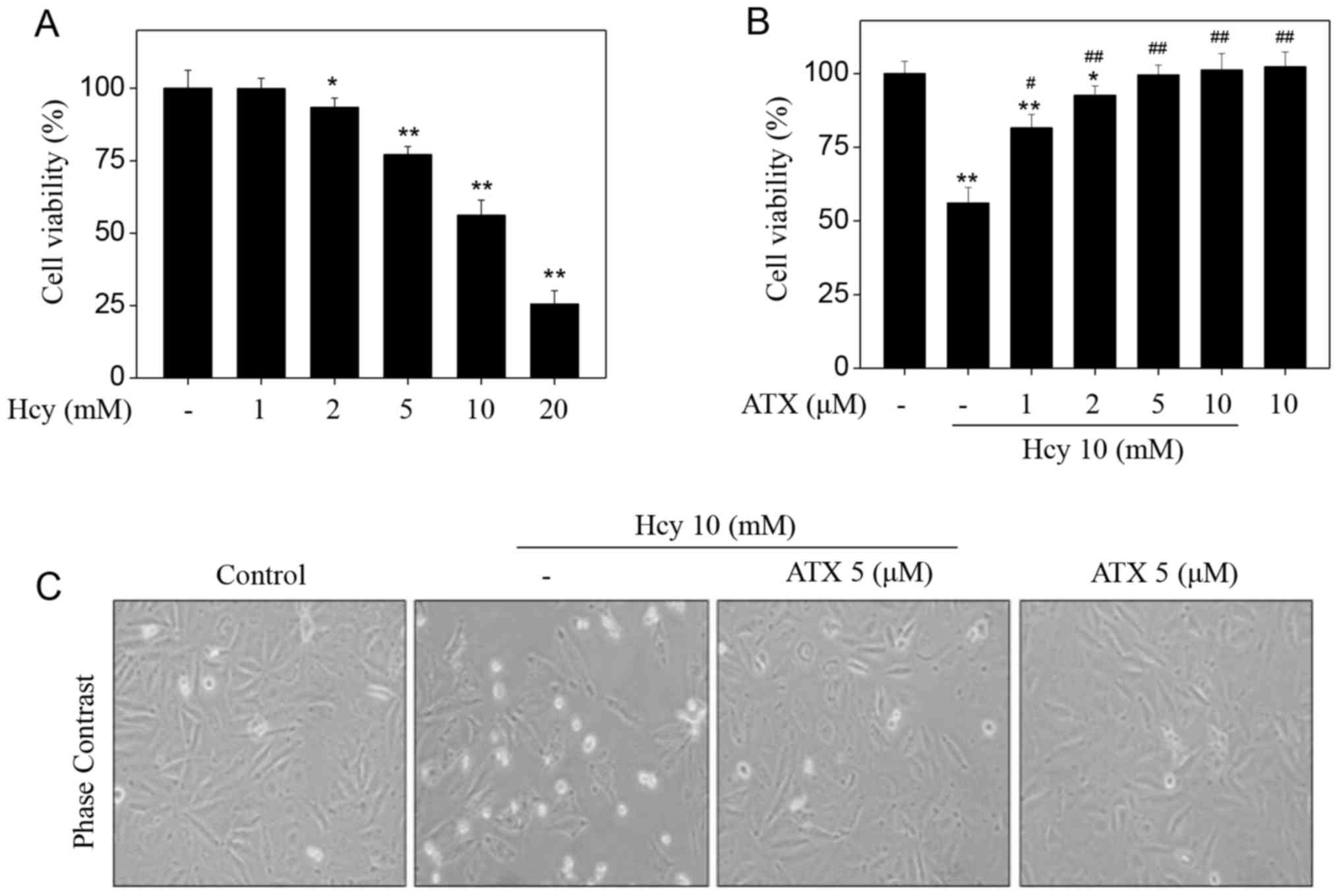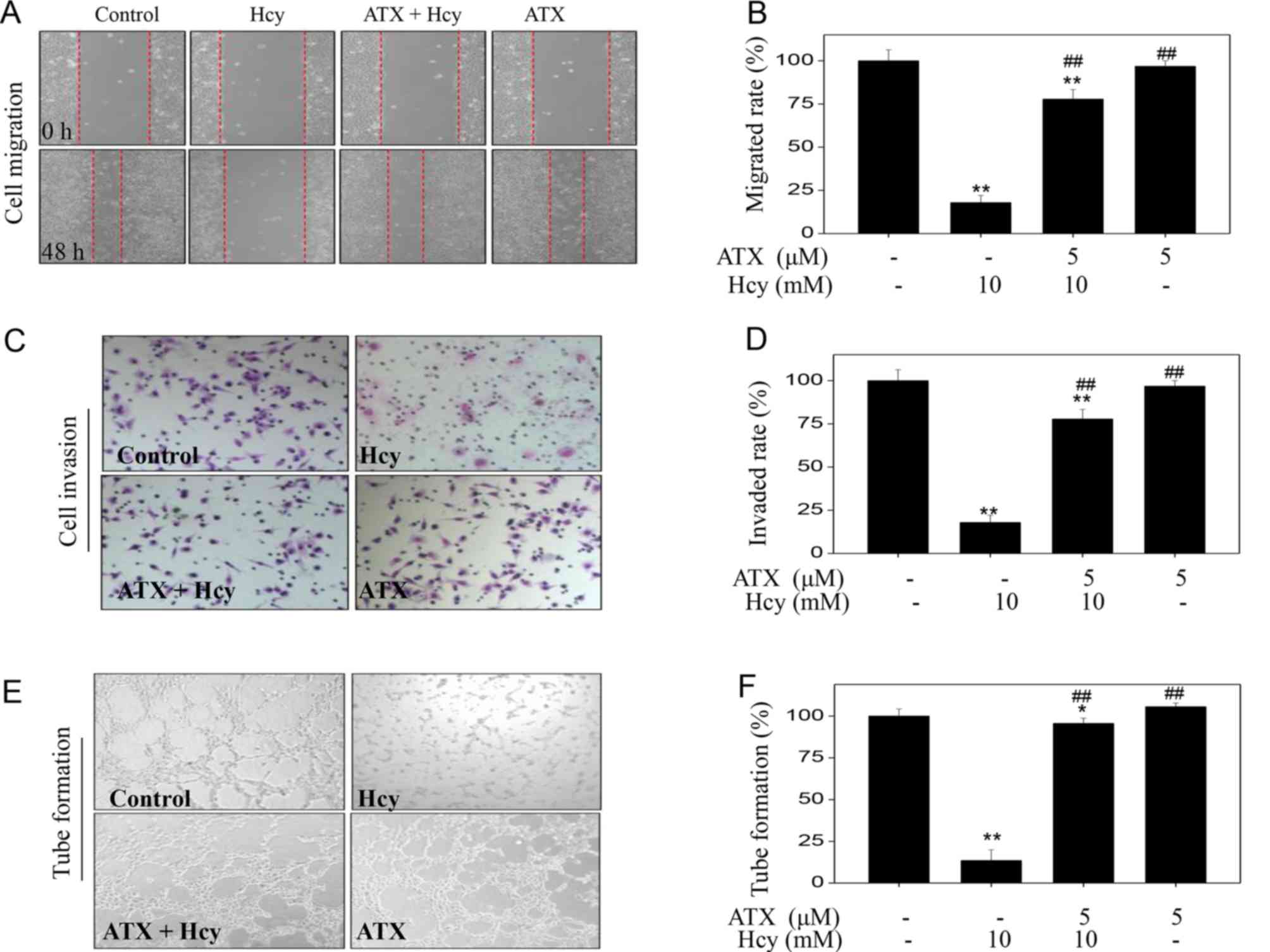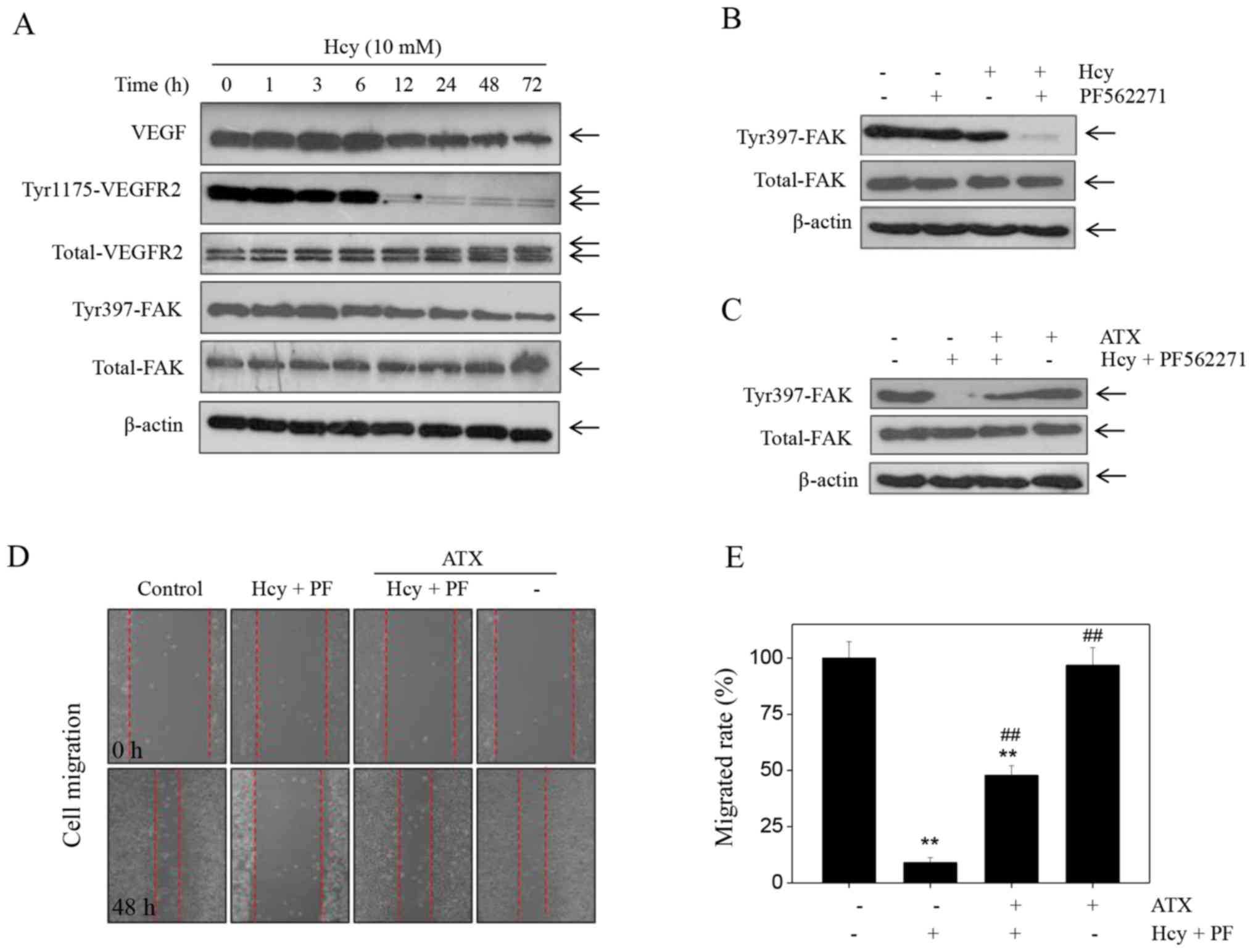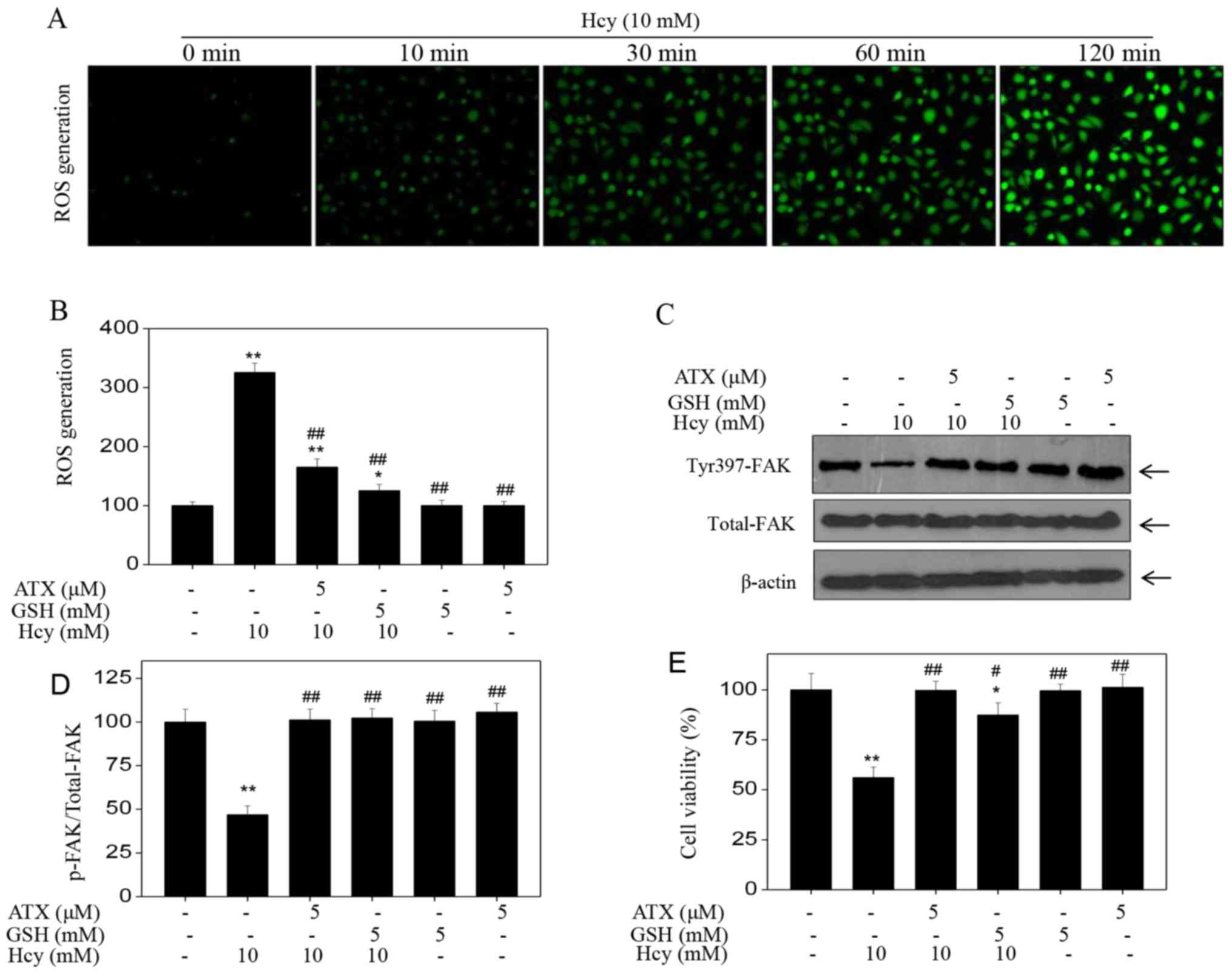|
1
|
Fateeva VV and Vorobyova OV: Nitric oxide:
From the mechanism of action to pharmacological effects in
cerebrovascular diseases. Zh Nevrol Psikhiatr Im S S Korsakova.
117:131–135. 2017.(In Russian). View Article : Google Scholar : PubMed/NCBI
|
|
2
|
Poggesi A, Pasi M, Pescini F, Pantoni L
and Inzitari D: Circulating biologic markers of endothelial
dysfunction in cerebral small vessel disease: A review. J Cereb
Blood Flow Metab. 36:72–94. 2016. View Article : Google Scholar : PubMed/NCBI
|
|
3
|
Holm H, Nägga K, Nilsson ED, Ricci F,
Melander O, Hansson O, Bachus E, Magnusson M and Fedorowski A:
Biomarkers of microvascular endothelial dysfunction predict
incident dementia: A population-based prospective study. J Intern
Med. 282:94–101. 2017. View Article : Google Scholar : PubMed/NCBI
|
|
4
|
Michinaga S and Koyama Y: Protection of
the Blood-Brain barrier as a therapeutic strategy for brain damage.
Biol Pharm Bull. 40:569–575. 2017. View Article : Google Scholar : PubMed/NCBI
|
|
5
|
Spencer JI, Bell JS and DeLuca GC:
Vascular pathology in multiple sclerosis: Reframing pathogenesis
around the blood-brain barrier. J Neurol Neurosurg Psychiatry.
89:42–52. 2018. View Article : Google Scholar : PubMed/NCBI
|
|
6
|
Nezu T, Hosomi N, Aoki S, Kubo S, Araki M,
Mukai T, Takahashi T, Maruyama H, Higashi Y and Matsumoto M:
Endothelial dysfunction is associated with the severity of cerebral
small vessel disease. Hypertens Res. 38:291–297. 2015. View Article : Google Scholar : PubMed/NCBI
|
|
7
|
Dayal S, Baumbach GL, Arning E,
Bottiglieri T, Faraci FM and Lentz SR: Deficiency of superoxide
dismutase promotes cerebral vascular hypertrophy and vascular
dysfunction in hyperhomocysteinemia. PLoS One. 12:e01757322017.
View Article : Google Scholar : PubMed/NCBI
|
|
8
|
Hatefi M, Behzadi S, Dastjerdi MM,
Ghahnavieh AA, Rahmani A, Mahdizadeh F, Hafezi Ahmadi MR and
Asadollahi K: Correlation of homocysteine with cerebral hemodynamic
abnormality, endothelial dysfunction markers, and cognition
impairment in patients with traumatic brain injury. World
Neurosurg. 97:70–79. 2017. View Article : Google Scholar : PubMed/NCBI
|
|
9
|
Škovierová H, Vidomanová E, Mahmood S,
Sopková J, Drgová A, Červeňová T, Halašová E and Lehotský J: The
molecular and cellular effect of homocysteine metabolism imbalance
on human health. Int J Mol Sci. 17(pii): E17332016. View Article : Google Scholar : PubMed/NCBI
|
|
10
|
Catena C, Colussi G, Url-Michitsch M, Nait
F and Sechi LA: Subclinical carotid artery disease and plasma
homocysteine levels in patients with hypertension. J Am Soc
Hypertens. 9:167–175. 2015. View Article : Google Scholar : PubMed/NCBI
|
|
11
|
Wang BR, Ou Z, Jiang T, Zhang YD, Zhao HD,
Tian YY, Shi JQ and Zhou JS: Independent correlation of serum
homocysteine with cerebral microbleeds in patients with acute
ischemic stroke due to large-artery atherosclerosis. J Stroke
Cerebrovasc Dis. 25:2746–2751. 2016. View Article : Google Scholar : PubMed/NCBI
|
|
12
|
Wu GH, Kong FZ, Dong XF, Wu DF, Guo QZ,
Shen AR, Cheng QZ and Luo WF: Association between
hyperhomocysteinemia and stroke with atherosclerosis and small
artery occlusion depends on homocysteine metabolism-related vitamin
levels in Chinese patients with normal renal function. Metab Brain
Dis. 32:859–865. 2017. View Article : Google Scholar : PubMed/NCBI
|
|
13
|
Zhang Z, Wei C, Zhou Y, Yan T, Wang Z, Li
W and Zhao L: Homocysteine induces apoptosis of human umbilical
vein endothelial cells via mitochondrial dysfunction and
endoplasmic reticulum stress. Oxid Med Cell Longev.
2017:57365062017. View Article : Google Scholar : PubMed/NCBI
|
|
14
|
Yan TT, Li Q, Zhang XH, Wu WK, Sun J, Li
L, Zhang Q and Tan HM: Homocysteine impaired endothelial function
through compromised vascular endothelial growth
factor/Akt/endothelial nitric oxide synthase signalling. Clin Exp
Pharmacol Physiol. 37:1071–1077. 2010. View Article : Google Scholar : PubMed/NCBI
|
|
15
|
Pan L, Yu G, Huang J, Zheng X and Xu Y:
Homocysteine inhibits angiogenesis through cytoskeleton remodeling.
Biosci Rep. 37(pii): BSR201708602017. View Article : Google Scholar : PubMed/NCBI
|
|
16
|
Oosterbaan AM, Steegers EA and Ursem NT:
The effects of homocysteine and folic acid on angiogenesis and VEGF
expression during chicken vascular development. Microvasc Res.
83:98–104. 2012. View Article : Google Scholar : PubMed/NCBI
|
|
17
|
Zhang Q, Li Q, Chen Y, Huang X, Yang IH,
Cao L, Wu WK and Tan HM: Homocysteine-impaired angiogenesis is
associated with VEGF/VEGFR inhibition. Front Biosci (Elite Ed).
4:2525–2535. 2012.PubMed/NCBI
|
|
18
|
Chen CH, Beard RS and Bearden SE:
Homocysteine impairs endothelial wound healing by activating
metabotropic glutamate receptor 5. Microcirculation. 19:285–295.
2012. View Article : Google Scholar : PubMed/NCBI
|
|
19
|
Rodrıguez-Nieto S, Chavarrıa T,
Martınez-Poveda B, Sánchez-Jiménez F, Rodríguez Quesada A and
Medina MA: Anti-angiogenic effects of homocysteine on cultured
endothelial cells. Biochem Biophys Res Commun. 293:497–500. 2002.
View Article : Google Scholar : PubMed/NCBI
|
|
20
|
Fan CD, Sun JY, Fu XT, Hou YJ, Li Y, Yang
MF, Fu XY and Sun BL: Astaxanthin attenuates homocysteine-induced
cardiotoxicity in vitro and in vivo by inhibiting mitochondrial
dysfunction and oxidative damage. Front Physiol. 8:10412017.
View Article : Google Scholar : PubMed/NCBI
|
|
21
|
Pang X, Si J, Xu S, Li Y and Liu J:
Simvastatin inhibits homocysteine-induced CRP generation via
interfering with the ROS-p38/ERK1/2 signal pathway in rat vascular
smooth muscle cells. Vascul Pharmacol. 88:42–47. 2017. View Article : Google Scholar : PubMed/NCBI
|
|
22
|
Tian X, Zhao L, Song X, Yan Y, Liu N, Li
T, Yan B and Liu B: HSP27 inhibits homocysteine-induced endothelial
apoptosis by modulation of ROS production and mitochondrial
Caspase-dependent apoptotic pathway. Biomed Res Int.
2016:48478742016. View Article : Google Scholar : PubMed/NCBI
|
|
23
|
Zhang M, Cui Z, Cui H, Wang Y and Zhong C:
Astaxanthin protects astrocytes against trauma-induced apoptosis
through inhibition of NKCC1 expression via the NF-κB signaling
pathway. BMC Neurosci. 18:422017. View Article : Google Scholar : PubMed/NCBI
|
|
24
|
Nai Y, Liu H, Bi X, Gao H and Ren C:
Protective effect of astaxanthin on acute cerebral infarction in
rats. Hum Exp Toxicol. 37:929–936. 2018. View Article : Google Scholar : PubMed/NCBI
|
|
25
|
Zhang M, Cui Z, Cui H, Cao Y, Zhong C and
Wang Y: Astaxanthin alleviates cerebral edema by modulating NKCC1
and AQP4 expression after traumatic brain injury in mice. BMC
Neurosci. 17:602016. View Article : Google Scholar : PubMed/NCBI
|
|
26
|
Lee DH, Lee YJ and Kwon KH:
Neuroprotective effects of astaxanthin in oxygen-glucose
deprivation in SH-SY5Y cells and global cerebral ischemia in rat. J
Clin Biochem Nutr. 47:121–129. 2010. View Article : Google Scholar : PubMed/NCBI
|
|
27
|
Liu X and Osawa T: Astaxanthin protects
neuronal cells against oxidative damage and is a potent candidate
for brain food. Forum Nutr. 61:129–135. 2009. View Article : Google Scholar : PubMed/NCBI
|
|
28
|
Lu YP, Liu SY, Sun H, Wu XM, Li JJ and Zhu
L: Neuroprotective effect of astaxanthin on H(2)O(2)-induced
neurotoxicity in vitro and on focal cerebral ischemia in vivo.
Brain Res. 1360:40–48. 2010. View Article : Google Scholar : PubMed/NCBI
|
|
29
|
Shen H, Kuo CC, Chou J, Delvolve A,
Jackson SN, Post J, Woods AS, Hoffer BJ, Wang Y and Harvey BK:
Astaxanthin reduces ischemic brain injury in adult rats. FASEB J.
23:1958–1968. 2009. View Article : Google Scholar : PubMed/NCBI
|
|
30
|
Wen X, Huang A, Hu J, Zhong Z, Liu Y, Li
Z, Pan X and Liu Z: Neuroprotective effect of astaxanthin against
glutamate-induced cytotoxicity in HT22 cells: Involvement of the
Akt/GSK-3β pathway. Neuroscience. 303:558–568. 2015. View Article : Google Scholar : PubMed/NCBI
|
|
31
|
Wu Q, Zhang XS, Wang HD, Zhang X, Yu Q, Li
W, Zhou ML and Wang XL: Astaxanthin activates nuclear factor
erythroid-related factor 2 and the antioxidant responsive element
(Nrf2-ARE) pathway in the brain after subarachnoid hemorrhage in
rats and attenuates early brain injury. Mar Drugs. 12:6125–6141.
2014. View Article : Google Scholar : PubMed/NCBI
|
|
32
|
Zhang XS, Zhang X, Wu Q, Li W, Wang CX,
Xie GB, Zhou XM, Shi JX and Zhou ML: Astaxanthin offers
neuroprotection and reduces neuroinflammation in experimental
subarachnoid hemorrhage. J Surg Res. 192:206–213. 2014. View Article : Google Scholar : PubMed/NCBI
|
|
33
|
Zhang XS, Zhang X, Wu Q, Li W, Zhang QR,
Wang CX, Zhou XM, Li H, Shi JX and Zhou ML: Astaxanthin alleviates
early brain injury following subarachnoid hemorrhage in rats:
Possible involvement of Akt/bad signaling. Mar Drugs. 12:4291–4310.
2014. View Article : Google Scholar : PubMed/NCBI
|
|
34
|
Zhang XS, Zhang X, Zhou ML, Zhou XM, Li N,
Li W, Cong ZX, Sun Q, Zhuang Z, Wang CX and Shi JX: Amelioration of
oxidative stress and protection against early brain injury by
astaxanthin after experimental subarachnoid hemorrhage. J
Neurosurg. 121:42–54. 2014. View Article : Google Scholar : PubMed/NCBI
|
|
35
|
Bi YL, Mi PY, Zhao SJ, Pan HM, Li HJ, Liu
F, Shao LR, Zhang HF, Zhang P and Jiang SL: Salinomycin exhibits
anti-angiogenic activity against human glioma in vitro and
in vivo by suppressing the VEGF-VEGFR2-AKT/FAK signaling
axis. Int J Mol Med. 39:1255–1261. 2017. View Article : Google Scholar : PubMed/NCBI
|
|
36
|
Lai WK and Kan MY: Homocysteine-induced
endothelial dysfunction. Ann Nutr Metab. 67:1–12. 2015. View Article : Google Scholar : PubMed/NCBI
|
|
37
|
Tiwari A, Pattanaik N, Mohanty Jaiswal A
and Dixit M: Increased FRG1 expression reduces in vitro cell
migration, invasion and angiogenesis, ex vivo supported by
reduced expression in tumors. Biosci Rep. 37(pii): BSR201710622017.
View Article : Google Scholar : PubMed/NCBI
|
|
38
|
Bai Y, Bai L, Zhou J, Chen H and Zhang L:
Sequential delivery of VEGF, FGF-2 and PDGF from the polymeric
system enhance HUVECs angiogenesis in vitro and CAM angiogenesis.
Cell Immunol. 323:19–32. 2018. View Article : Google Scholar : PubMed/NCBI
|
|
39
|
Heldin J, O'Callaghan P, Hernández Vera R,
Fuchs PF, Gerwins P and Kreuger J: FGD5 sustains vascular
endothelial growth factor A (VEGFA) signaling through inhibition of
proteasome-mediated VEGF receptor 2 degradation. Cell Signal.
40:125–132. 2017. View Article : Google Scholar : PubMed/NCBI
|
|
40
|
Lv J, Sun B, Mai Z, Jiang M and Du J:
STAT3 potentiates the ability of airway smooth muscle cells to
promote angiogenesis by regulating VEGF signalling. Exp Physiol.
102:598–606. 2017. View Article : Google Scholar : PubMed/NCBI
|
|
41
|
Mahecha AM and Wang H: The influence of
vascular endothelial growth factor-A and matrix metalloproteinase-2
and-9 in angiogenesis, metastasis, and prognosis of endometrial
cancer. Onco Targets Ther. 10:4617–4624. 2017. View Article : Google Scholar : PubMed/NCBI
|
|
42
|
Tang F, Pacheco MTF, Chen P, Liang D and
Li W: Secretogranin III promotes angiogenesis through MEK/ERK
signaling pathway. Biochem Biophys Res Commun. 495:781–786. 2018.
View Article : Google Scholar : PubMed/NCBI
|
|
43
|
Abdelzaher LA, Imaizumi T, Suzuki T,
Tomita K, Takashina M and Hattori Y: Astaxanthin alleviates
oxidative stress insults-related derangements in human vascular
endothelial cells exposed to glucose fluctuations. Life Sci.
150:24–31. 2016. View Article : Google Scholar : PubMed/NCBI
|


















